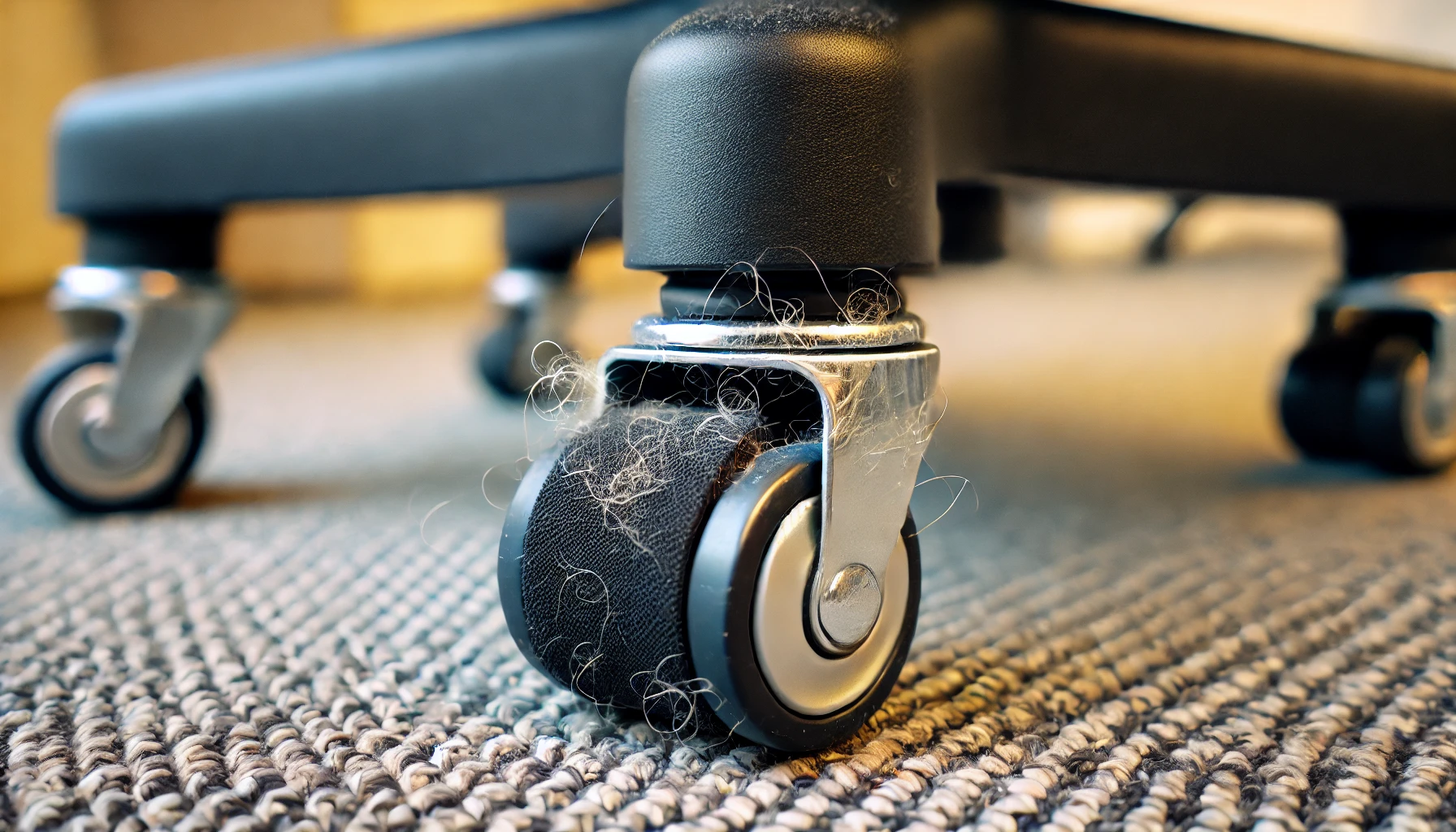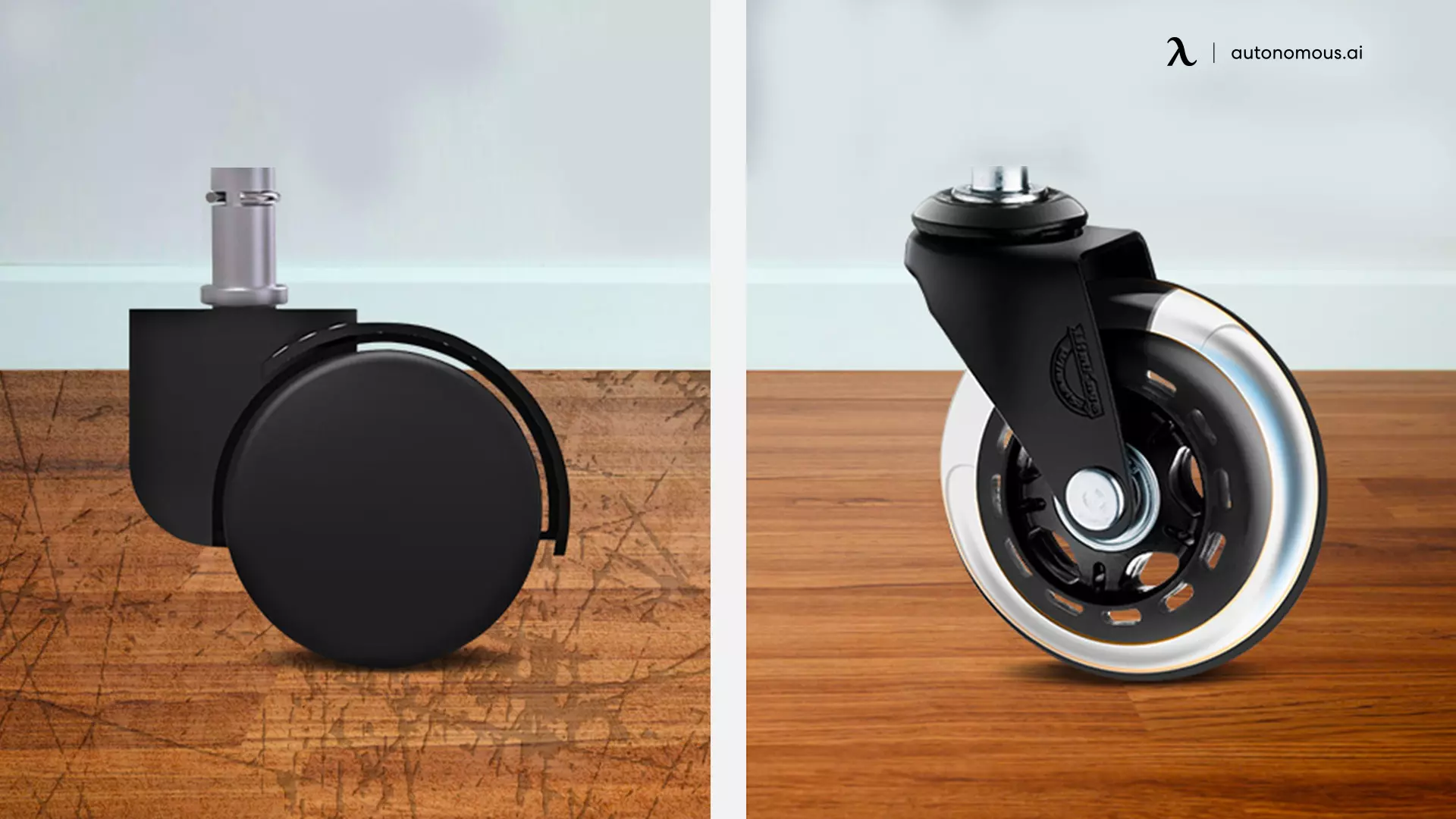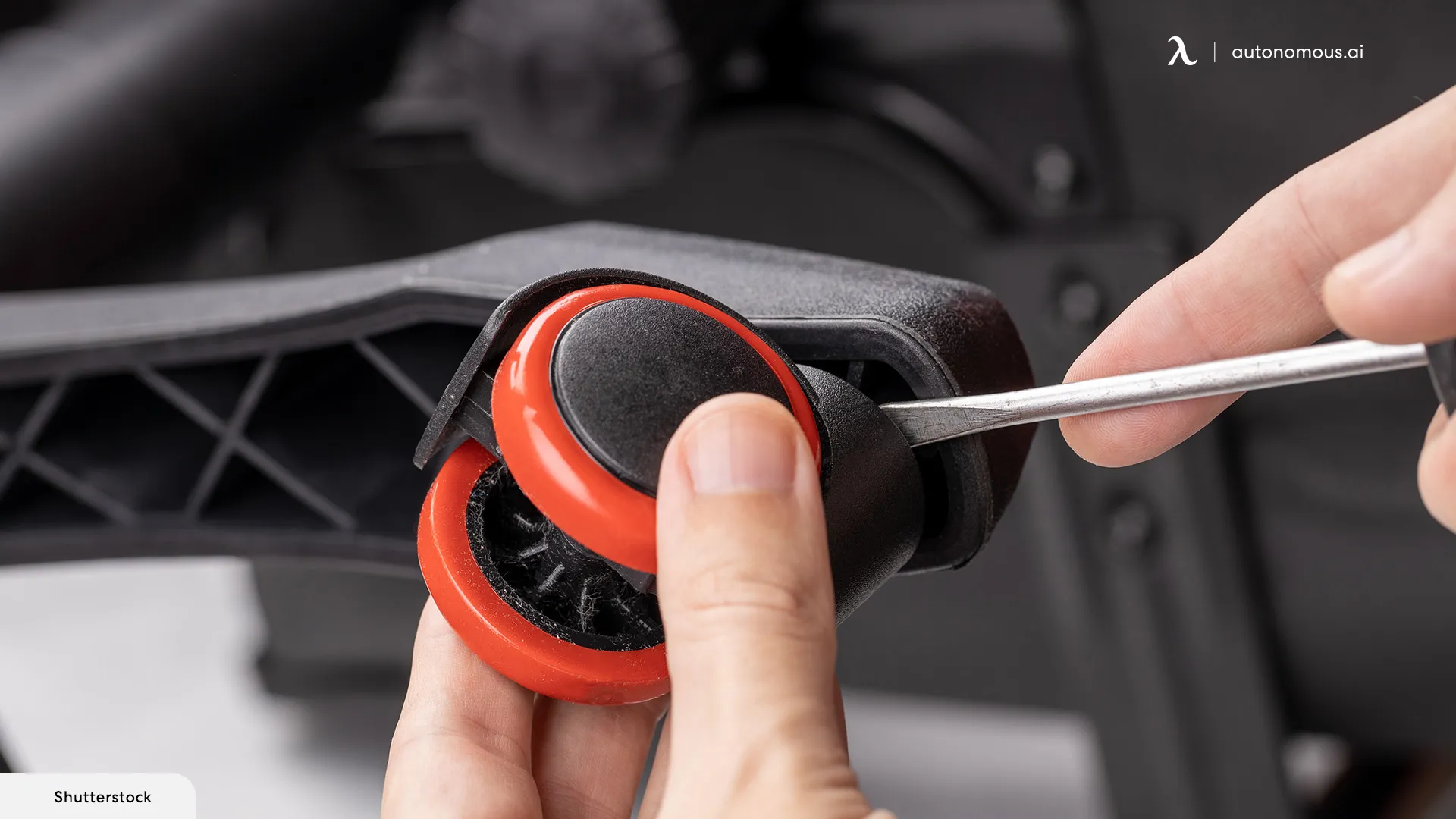
Hard vs. Soft Casters: The Ultimate Guide for Carpets and Floors
Table of Contents
When it comes to office chairs, the type of caster wheels you choose significantly impacts your workspace comfort, mobility, and the condition of your floors. Whether you have carpet, hardwood, or tile, choosing between hard vs. soft casters is essential. In this detailed guide, we’ll break down the differences between hard and soft casters, how to choose the right ones for carpets, and offer tips for switching casters seamlessly.
1. What Are Hard Casters?
Hard casters are wheels typically made from durable materials like plastic or nylon. They’re designed to roll smoothly over hard, flat surfaces, making them the standard option on most office chairs. Their simplicity and versatility make them suitable for standard office setups, particularly those with firm flooring.
For more information on chair casters in general, explore what are casters on chairs to understand their role in mobility and functionality.
Advantages of Hard Casters:
- Durability: Hard casters are built to last and can handle heavy loads without deforming.
- Smooth Rolling: They glide effortlessly on flat, firm surfaces like tile and concrete.
- Cost-Effective: These are often less expensive and more readily available than soft casters.
Drawbacks of Hard Casters:
- Floor Damage: Hard casters can leave scratches and dents on delicate floors like hardwood or laminate.
- Noise Levels: They produce more noise when rolling, especially on hard floors without a protective mat.
- Limited Traction: They struggle on soft or uneven surfaces, such as thick carpets.
If your workspace demands a stationary setup or you’re debating other mobility options, consider the difference between glides and casters for chairs to see if glides may better suit your needs.
Best Floors for Hard Casters:
- Tile
- Concrete
- Laminate
- Hardwood (if a mat is used)
2. What Are Soft Casters?
Soft casters are designed for sensitive floors and textured surfaces, using softer materials like rubber or polyurethane to provide better traction and floor protection.
Advantages of Soft Casters:
- Floor Protection: Their softer material reduces the risk of scratches, dents, or scuff marks, making them ideal for hardwood or vinyl floors.
- Traction on Carpets: Soft casters grip the surface, allowing for smoother rolling on both low-pile and high-pile carpets.
- Quieter Movement: Soft casters absorb sound better than hard casters, providing a quieter experience.
Drawbacks of Soft Casters:
- Durability: On rough or hard surfaces, the softer material may wear down faster over time.
- Cost: They can be slightly more expensive than hard casters due to their specialized design.
Best Floors for Soft Casters:
- Carpet (both low-pile and high-pile)
- Hardwood (without mats)
- Vinyl
- Delicate flooring like marble
3. Hard vs. Soft Casters: Key Differences
Understanding the difference between hard and soft casters is essential for selecting the right type for your space. Here’s a detailed comparison:
| Feature | Hard Casters | Soft Casters |
|---|---|---|
| Material | Hard plastic or nylon | Rubber or polyurethane |
| Surface Compatibility | Best for hard floors like tile or concrete | Best for carpets, hardwood, and delicate surfaces |
| Traction | Low traction on soft surfaces | High traction, perfect for carpets |
| Noise | Louder, especially on hard floors | Quieter and smoother |
| Floor Protection | May scratch or dent delicate floors | Protects floors from scuffs and scratches |
| Durability | Long-lasting, especially on hard surfaces | Can wear down faster on rough surfaces |
4. Hard or Soft Casters for Carpet?
When deciding between hard or soft casters for carpet, soft casters are the clear winner. Here’s why they excel in terms of grip, ease of use, and protection for your carpet.
- Grip and Traction
Soft casters are specifically designed to work with textured surfaces like carpets. Their rubber or polyurethane coating grips the carpet fibers, allowing for smooth movement. This traction prevents the wheels from sinking into the carpet, a common issue with hard casters, particularly on thicker or high-pile carpets.
If you're using a chair on high-pile carpet, consider combining soft casters with a chair mat for high-pile surfaces. Mats reduce friction and make movement even easier.
- Ease of Use
Chairs with soft casters glide effortlessly over both low-pile and high-pile carpets. Their softer material ensures smoother mobility, reducing strain when moving around in your workspace. This makes them especially useful in setups with heavier chairs or thicker carpets. For optimal performance, pairing soft casters with a desk chair for carpeted floors can enhance mobility and comfort.
- Protection
Hard casters can crush and damage carpet fibers over time, leading to visible wear patterns or flattened areas. Soft casters, on the other hand, are gentler on carpets and help maintain their appearance and texture.
To further protect your carpet, a chair mat for carpeted floors can act as a barrier, preventing wear and extending the life of both your carpet and casters. By combining soft casters with appropriate tools like ergonomic chairs and chair mats, you can create a workspace that prioritizes both functionality and floor protection. For additional tips, explore how to protect your carpet from office chairs and maintain a pristine work environment.

5. Choosing the Right Casters for Your Workspace
The choice between hard and soft casters depends on several factors. Here's a breakdown:
Floor Type:
- Hard Floors: Use hard casters for surfaces like tile, concrete, or laminate, where their smooth rolling ensures easy movement.
- Carpet or Delicate Floors: Opt for soft casters, which protect against scratches and roll smoothly on carpets and hardwood.
For an in-depth look at options, explore the best office chair wheels to find the perfect match for your flooring.
Noise Levels: If you work in a quiet environment, such as a home office or shared workspace, soft casters are a better choice due to their noise-absorbing properties.
Durability: For heavy-duty use or rough, abrasive floors, hard casters tend to last longer. Their tough construction makes them well-suited for industrial or commercial settings where durability is key.
Floor Protection: Soft casters are essential for delicate floors like hardwood or vinyl, as they prevent scratches, scuffs, and dents. If you're using hard casters, adding a protective chair mat can help safeguard your flooring from damage.
If comfort is your top priority, you may want to consider a cross-legged office chair with wheels for enhanced flexibility and style in your workspace.

6. How to Switch Casters on Your Office Chair
Replacing casters is a simple yet impactful way to enhance your chair’s functionality and protect your floors. Follow these steps to replace your chair wheels quickly and efficiently:
Check Compatibility
Most office chairs use standard caster stems, but it's crucial to confirm the size before purchasing replacements. The typical size is 11mm or 7/16-inch in diameter. Ensuring compatibility prevents wobbling or loose fits after installation.
Remove Old Casters
To remove your existing casters:
- Flip your chair upside down to access the wheels easily.
- Firmly grip the caster and pull it out. If it’s stuck, use a flathead screwdriver or pliers for extra leverage.
Pro Tip: While removing old wheels, you might notice hair or debris stuck in them. This is a common issue that can affect wheel performance. For guidance on cleaning, check out how to remove hair from office chair wheels.
Install New Casters
Once the old casters are removed:
- Align the new caster stem with the socket on the chair base.
- Push the caster into the socket until it snaps securely into place.
Ensure each wheel rotates freely before moving on to the next.
Test Your Chair
After installing the new casters, flip your chair back upright and roll it on your intended surface. This step ensures the wheels are properly installed and perform as expected.
If you’re dealing with a chair that moves too freely, consider solutions like stoppers or brakes to keep it stationary. Learn more in how to stop a rolling chair.
Replacing chair wheels is a straightforward way to improve mobility and protect your flooring. For a complete guide, explore how to replace chair wheels in six easy steps and upgrade your workspace today.

Final Thoughts
Choosing between hard vs. soft chair casters ultimately depends on your flooring, noise tolerance, and the level of protection required. For hard floors like tile or laminate, hard casters combined with a protective mat work well to prevent scratches. On the other hand, carpets and delicate surfaces benefit significantly from soft casters, ensuring smooth movement and preserving the integrity of your flooring.
Upgrading your office chair with the right casters can transform your workspace, improving mobility, comfort, and durability over the long term. Additionally, understanding the different components of your chair, such as those shown in an office chair parts diagram, can help you make more informed upgrades and repairs.
If you’re looking to further improve your seating experience, consider exploring adaptive chairs for added flexibility or investing in ergonomic options to avoid the pitfalls of a non-ergonomic chair. For those requiring heavier-duty options, chairs like a big and tall gaming chair with a 400 lbs capacity can ensure comfort and durability.
Understanding the weight capacity of your chair is another important consideration. Chairs with appropriate weight limits, as explained in the standard office chair weight limit guide, ensure safety and longevity. For those prioritizing mobility, rolling office desk chairs offer a seamless solution for dynamic workspaces.
Get exclusive rewards
for your first Autonomous blog subscription.
Spread the word
You May Also Like




-7512dd9e-3510-42ed-92df-b8d735ea14ce.svg)


